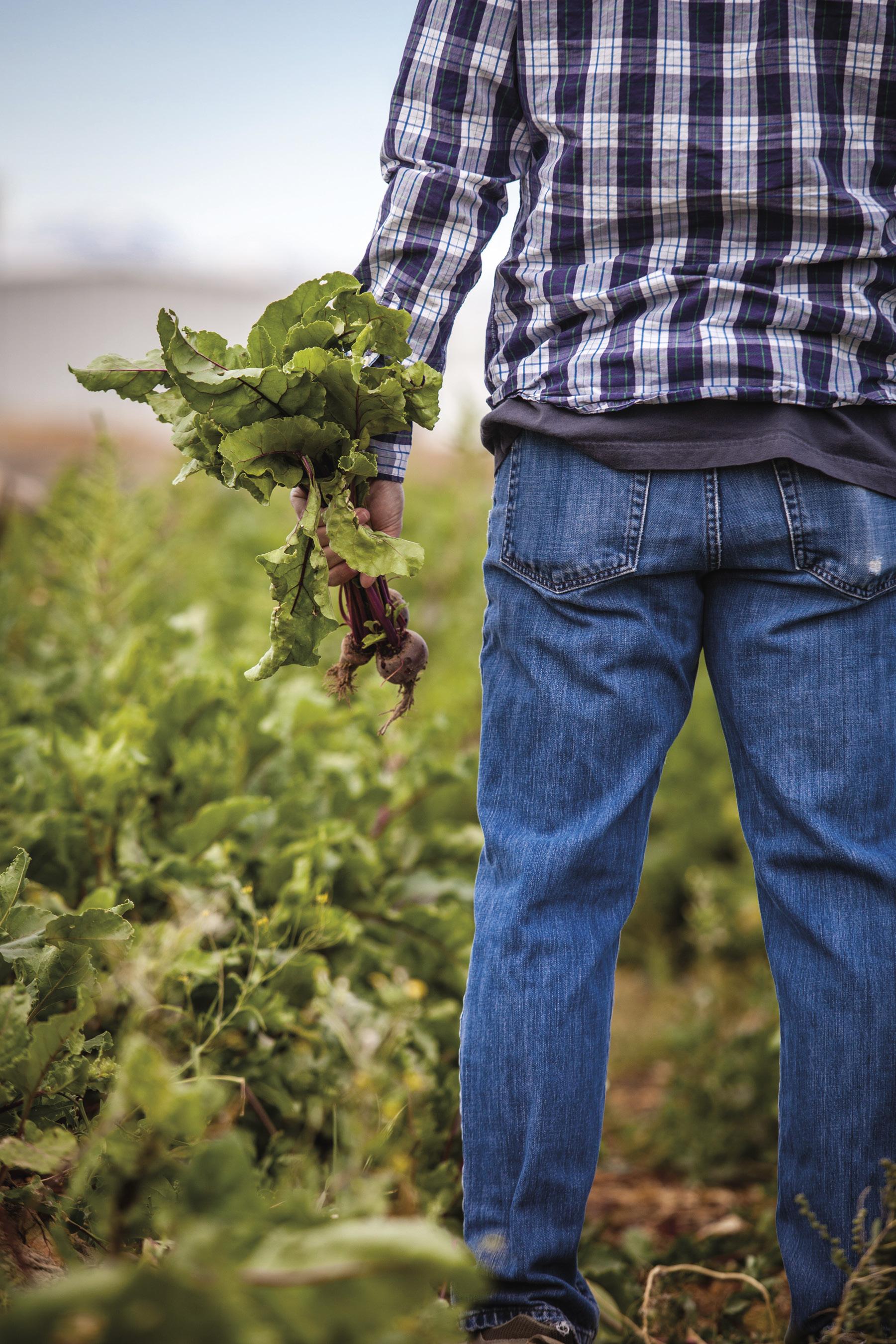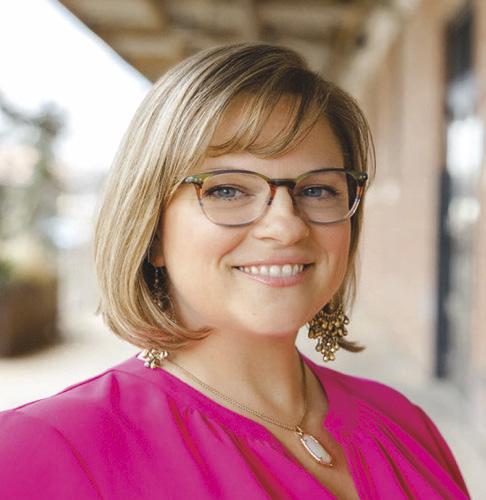








DYNAMIC, MODERN + FULLY ELECTRIC





 Dr. Jessica Harden
Dr. Jessica Harden







THE MILL MAGAZINE















 Dr. Jessica Harden
Dr. Jessica Harden







THE MILL MAGAZINE
EDITION 14 NO.2
PUBLISHER
MarketStyleMedia

EDITOR IN CHIEF
TraceyRoman
COMMUNITY EDITOR
AubreyDucane
CONTRIBUTING WRITERS
JoshueT.Beck
WilliamEmerson
Alice Achterhof
Brina Blum
Luisa Brimble
Brooke Cagle
CandaceMattingly LisaMcTigue
BrandonReich
Heather Gill
Nick Karvounis
Rajesh Kavasseri
PHOTOGRAPHERS ADVERTISING ad.sales@themillmagazine.com
803-619-0491
Sarah Lachise
Brooke Lark
Frank McKenna
Christine Siracusa
©2023 THE MILL MAGAZINE. ALL RIGHTS RESERVED. NO PART OF THIS PUBLICATION MAY BE REPRODUCED IN ANY FORM WITHOUT THE EXPRESS WRITTEN CONSENT OF THE COPYRIGHT OWNER. THE MILL MAGAZINE DOES NOT NECESSARILY ENDORSE THE VIEWS AND PERCEPTIONS OF ADVERTISERS.
WE ARE SOCIAL, TOO. JOIN THE CONVERSATION @themillmag












 Text by Joshua T. Beck and Brandon Reich
Text by Joshua T. Beck and Brandon Reich
As residents of idyllic Eugene, Oregon, with its culture of local food, we might be forgiven for assuming all Americans are “locavores.”
The rich volcanic and glacial soil deposits of the Willamette Valley are irrigated by a splendid river system and tilled by farmers who raise everything from goats to hazelnuts. These farmers make Oregon the seventh-best state in terms of the availability and consumption of local foods, well ahead of neighboring California and Washington. The people of Oregon have access to an exceptional variety of local foods and take great pride in eating local, to the point that the comedy series “Portlandia” made a sketch about it.


And Oregonians aren’t alone. Since Oxford University Press proclaimed “locavore” the 2007 word of the year, the local food scene has exploded in communities around the world. Chefs cited locally sourced foods as the top menu trend of 2016, and local food sales are expected to nearly double from 2014 to 2019, topping US$20 billion.
While it may be tempting to stereotype locavores as wealthy hippie liberals, as consumer researchers we wanted to dig deeper. Our research shows that locavorism is a consumer ideology with beliefs that cut across class, politics, age, and gender.
These aren’t just people who like to eat local. Locavorism comes complete with a set of strongly held core values and beliefs.
Notably, locavores support local food communities wherever they happen to be. A locavore on vacation in Orlando might venture out to taste one of Florida’s many locally grown tropical fruits such as papaya.
And somewhat unexpectedly, our research shows that locavores do not care whether local foods are sold by large corporate retailers, so long as the “local” claim can be trusted. It’s the localness that matters most.
Locavores want all of their food, even boring granola, to be locally sourced. And these aren’t just gourmet foodies with sophisticated palettes.
Given the importance of “local” to locavores, what it means matters. But the definition can vary.
Some might think of local foods as those produced within one’s city, state, or region. Others might focus solely on the physical distance between production and consumption. Both perspectives are valid and are manifest in the food industry.
For the purposes of farm lending programs, the federal government defines food as local if it hasn’t moved more than 400 miles from where it was grown. Yet most consumers tend to think of local as within 100 miles of their state’s borders. The variety of
definitions may be why characters in a “Portlandia” sketch opted not to take a restaurant’s word and instead visited a farm to verify a chicken’s localness.
In fact, deception can be an unfortunate issue within the sector, with some sellers outright lying about the origin of their foods. Yet because locavores are ideologically driven, they tend to root out the hucksters. Locavores’ increased tendency to call a farm to express gratitude for ingredients in a restaurant meal makes deceit difficult to sustain.
To better understand what it means to be a locavore and develop a way to measure it, we conducted six studies on adult consumers across the U.S.
Prior to beginning the first study, we conducted informal interviews with Oregon farmers, food researchers, and consumers at a local market. We also reviewed several books and academic articles concerning local food consumption, all of which led us to classify locavorism as an ideology with three core beliefs:
1. local foods are superior to non-local foods
2. non-local food systems are destructive and untrustworthy
3. local food consumption contributes to community
We then used these beliefs to develop a scale that would allow us to measure locavorism. We generated a set of 23 statements to which consumers could respond on a scale from 1 to 7. Each statement reflected a belief that could fit within one of the three dimensions of locavorism, as well as a few that were more general.
Our first study was primarily meant to test our scale and statements. We asked 196 consumers online to respond to these 23 statements. Their answers helped us narrow it down to a list of 11 that we felt bestreflected locavorism.
A second study, also among online consumers, helped us isolate locavorism from similar ideologies, such as hometown bias and anti-corporatism, by identifying
locavores using our newly developed scale and measuring reactions to different scenarios. Examples include their food choices while traveling or when a local grocer isn’t available. We found that people we identified as locavores always preferred local food, even when traveling, and didn’t care if the vendor was a national chain.
A third study was a field experiment at the University of Oregon. As people walked through an atrium at the business school, we asked them to participate in a granola taste test and rate how likely they’d be to purchase some. Half of the 99 participants were told that the granola was a local brand, while the rest were told it was national – though they were actually identical.
One week later, we asked them to complete our locavore scale, which showed a strong correlation between those who ranked high and a strong interest in purchasing the granola – but only when it was marketed as local. In reality, all participants tasted the same exact granola.
And so from this experiment, we concluded that it is their beliefs rather than physiological taste driving locavores’ food preferences.
The final three studies involved surveying grocery shoppers in Los Angeles, New York City, and Eugene, Oregon. We found in each case that our scale predicted preferences for local foods versus national brands and showed that locavores derived more meaning from the former.
Overall, the results suggest that locavorism isn’t a simple preference. It is a strongly held ideology, akin to politics or religion, that predicts what people eat, where they shop, and how they respond to food advertisements.
As we noted, locavorism can’t be explained by simple demographic variables. To test this, we aggregated the data from all six of our studies into one dataset comprising 1,261 consumers. We examined correlations between locavorism and the demographic measures we collected, such as age, gender, and political orientation. We found only weak
correlations.
In other words, locavores are their own tribe.
Most food in America is still grown by a handful of very large farms. In fact, 4 percent of farms account for two-thirds of all food sales.
Yet there is growing interest in the small-scale, niche farms that sell direct-to-consumer, a sector whose sales grew 61 percent from 2008 to 2012. Around the same time, the number of farmers’ markets jumped from under 3,000 in 2006 to more than 8,000 in 2014.
And national supermarket chains such as Safeway, Kroger, Publix, and Walmart are hopping on the bandwagon by providing more locally sourced food.
Even more impressive, from 2007 to 2014 there was a 430 percent increase in “farm to school” programs that aim to educate kids about food nutrition and serve locally sourced food in kids’ meals.
Put another way, the U.S. may be raising a nation of locavores that will continue to reshape how Americans shop for and eat food.
Joshua T. Beck is an Assistant Professor of Marketing at the University of Oregon. A consumer psychologist and marketing strategist, Professor Beck’s research focuses on the relationships consumers have with firms and their brands.
Brandon Reich is an Assistant Professor of Marketing at Portland State University teaching primarily Consumer Behavior and Marketing Management. His research builds on the theoretical foundations of social and personality psychology to develop an understanding of ideological consumption and its effects on marketplace functioning. This article was originally published on The Conversation.










•
• Masterful Moments® lifestyle programming and holistic wellness philosophy
• Modern, inviting spaces including a fitness center, rooftop bar and lounge, resort-style pool, dog park and more



• Assisted living and memory care on-site, if ever needed




 Tracy M. Frick Esquire SC Founding Partner
Tracy M. Frick Esquire SC Founding Partner

 Text by William Emerson
Text by William Emerson
SINCE THE 1790S, groups of brokers have gathered to piece together a financial market. And after the Civil War, regional exchanges really took off. The history of the early exchanges has been largely forgotten, “but they were engines of regional growth, facilitating the flow of capital into area business ventures and stoking their local economies,” stated Amy Cortese, author of Locavesting: The Revolution in Local Investing and How To Profit From It.

According to a research study on the role of regional exchanges, the areas that saw the most manufacturing growth (175% on average) were those with an exchange. Thus, regional stock exchanges were strongly associated with regional economic growth. Through securities regulations, business was bled away from the regional exchanges in favor of the bigger exchanges like the New York Stock Exchange. With the advent of technology, further consolidation occurred and the nature of the markets themselves changed from a not-forprofit status to being publicly traded entities as well. The focus shifted to larger companies with higher trading volumes and profits.

Cortese pointed out, “Wall Street is less a place than a metaphor for a vast, pulsing financial network that, in its pursuit of profits around the globe, has lost its sense of purpose and connection with the communities and regions it once served.” Of the trillions of dollars flowing through today’s exchanges, 99% is trading and speculation with the remaining 1% funding innovation and expansion. The purpose of the market was to raise capital, now the trend is of a speculative nature.

A new community-focused stock exchange would handle all of the functions of a stock market, listing company shares, providing price information, and









facilitating trading, but for a specific region. As the major stock exchanges continue their global consolidation, local exchanges would offer an alternative for a region’s companies and investors, much like the small exchanges that once flourished across the United States and other countries.

At a time when many communities are promoting buy-local campaigns, new local exchanges could serve as a focal point for local economic activity, as well as a branding tool for the region and its unique local enterprises. “Activity may be slow, and there won’t be the kind of volatility that allows traders to make a quick killing, but then, that’s exactly the point,” explained Cortese.

Local stock exchanges, like the kind that once dotted the land and served their regional economies, are staging a cautious comeback. They are seen by their proponents as an alternative to the frenzied speculation of modern markets and a way to reinvigorate capital investment in small, innovative firms and regional economies.

A major benefit of local exchanges is liquidity. Investors would be able to sell shares if they needed to, rather than having to hold them indefinitely, making many types of local investments more attractive. Regional exchanges could lead to a greater volume and diversity of publicly traded companies and help offset

the decline in listings at major exchanges. Investors would gain access to a diverse pool of qualified companies in their region to invest in. Local exchanges would be free of casino-like speculation and high-frequency trading; traders won’t be attracted to markets where there is not a lot of action. Communities can take back control and promote their own economies.

Great change always comes with some risk. Any new exchanges will likely take some time to get established. While the markets would provide liquidity, trading is likely to be light and even intermittent. Small companies of the type that may list on a local exchange may carry more risk than large, well-capitalized ones.

The availability and quality of company research may not be the same as for large caps that trade on major exchanges.

A community-focused stock exchange is a compelling idea that could, if well executed, provide a safe, alternative marketplace and important source of liquidity for small, locally based companies and investors.


Nestled at the mouth of the Charleston Harbor and neighbor to the Isle of Palms, Sullivan's Island is an inviting mix of wide beaches and watersports, history and folklore, local restaurants and shops, peace and perfect - just minutes from one of the country's most beloved cities, Charleston, South Carolina.

charlestoncvb.com/beaches/sullivans-island/



We have grown a lot since we opened our office in Fort Mill in 2018. Now, we’re setting deeper roots with a brand new office building right down the road in Springfield Town Center that will open this summer. Stop by or give me a call any time!








large swath of people sit around on the grassy knoll. The music of the festival drifts up the hill to the people clumped together, relaxing and enjoying the warm afternoon sunshine. A man, off to the side in an open area of grass begins to dance.
As he dances, his movements grow bigger, more wild, and more erratic. His motions draw the attention of the people around him. A woman picks up her mobile phone and begins to record this crazy, dancing man. The crowd laughs as the man’s dance becomes more exaggerated.
The man, oblivious of his onlookers, feels the music deep in his soul expressed by kicks and flailing of his arms to the rhythm. Another man runs over to him, joining him. He too kicks, flails, and jumps around to the music. The original dancing man acknowledges his new follower, as they dance and jump.


The dancing follower beckons his friends to join them. One bound over and joins the flailing, kicking, and jumping. Soon, two more people rush over to join the dance party.
Quickly three more people jump in on the impromptu dance party. This is the tipping point and the onceopen space fills with people running over to join the dancing, kicking, flailing, and jumping around.
The swath of people gathered on the grass are mostly up and have joined the dance party.
This is how you make a movement.
The leader of any movement needs to be willing to stand out and apart from the crowd and to be ridiculed for their ideas, yet strong enough to persevere. A leader does not need to inspire everyone. He needs to inspire one person - his first follower.
When the first follower joins the dance party, he was acknowledged by the leader and treated as an equal. When the leader did that, the one-man show became about the two of them. The leader’s nonverbal acceptance gave the first follower permission to invite more people, which he did.
The first follower plays a critical role in the development of a movement. They are the person that transforms a crazy idea into a plausible concept and a loon into a leader. This is an underestimated leadership role that creates the ability to take one person’s idea, build momentum, and make a movement. The first follower also plays an important teaching role. It is from him that the other participants learn how to follow the leader.
When the first follower’s friend joined the dance party, it became a crowd. A crowd makes the moment notable. A movement must be public in order for it to affect change.
The leader is the public face and voice of the movement, but new followers emulate the person that brought them into the movement. This creates
a tree graph wherein the new follower emulates their friend, who is emulating their friend, and so on and so forth until you reach the top of the ordered tree graph and the first follower is emulating the leader.
The momentum of membership or the critical mass threshold moment when people feel it is acceptable to join is the tipping point to an established movement.
For each person that joins the movement, it becomes easier for the next person to join because it makes the decision to join less risky. Therefore, the people that were hesitant to join before the movement reached its tipping point are now ready to sign on.
These followers are not seeking to stand out from the crowd, they do not want to be ridiculed for joining a movement, but they desire the cache associated with joining the movement in this early phase and want to be recognized as part of the “in-crowd” or the initial founding group.
If you are a leader, remember the importance of acknowledging, encouraging, and nurturing your first followers. Treat them as equals because the movement needs to be about the idea, not the leader. It is the first follower that is the catalyst for the movement. If you care about starting a movement, have the courage to join a leader with an idea that you believe in by standing up, rolling up your sleeves, and encouraging others to join in.
A localist is a person that believes that their community comes first. The relationships built in the community create a stronger foundation for a prosperous community. They teach others through their words and actions. Localists think before they act. They care about who they do business with, how they connect with people, and the ways they use the land.
The Business Alliance for Local Living Economies, BALLE, sits at the forefront of the Localist Movement. They represent thousands of communities and entrepreneurs, conveners, funders, and investors who
are affecting change by changing the way we perceive ourselves and our communities. Their mission is to create economies that work for everyone and build prosperity for all.
The best path to developing, resurrecting, and resuscitating a strong community is to create a bond between neighbors. The more a person is connected to their community; the more they care about and put effort into it.
Creating opportunities for local entrepreneurs to open businesses creates a diverse ecosystem of locally-owned businesses that pour money back into the local economy. When these new businesses rely on, seek suppliers from, and distribute to other locally-owned businesses, the local economy swells.
This is the first step to local wealth-building for everyone by creating more local jobs.
When we help the least of our neighbors, we all prosper. Community-supported infrastructure for training and education for the under-employed creates a strong and reliable workforce for the new local economy.
Be a change agent for public policy. Demand our political leaders to create a level playing field for small, locally owned businesses. Cities, counties, and states have the ability to expand their financing for local businesses. It’s in their power to help make commercial real estate affordable and put an end to corporate subsidies that are short-term solutions to long-term problems.
In exchange for corporate subsidies, create robust local ecosystems that build strong towns and solve real economic issues.
Humans desire connection. We live in isolated times. A room full of people can create an instant conversation without speaking a word. When we look up from our devices and look into the eyes of our neighbors, that is when we can begin to heal ourselves and our
community.
We need to tap into a deeper level of humanity, discover who we really are, and define who we want to be as a society. As creatures, we are all interdependent. The world we’ve created blocks our natural desire to connect and feel connected. We’ve lost our sense of communal purpose and desire for generosity. Our interpersonal connections make us fundamentally human.
ACCELERATE COLLABORATION
No man is an island. No business should be a solo sport. Create reliable, effective backbone organizations and mentorship structures that put the collective “we” over the importance of “me.”
Community centers like accelerator programs or alliances build the infrastructure, resources, and shared expenses to help propel small businesses and entrepreneurs. The development of local distribution channels and collectives help scale businesses at the necessary rate to make them relevant in a modern growing economy.
THE TIPPING POINT EXPLORED
“Look at the world around you. It may seem like an immovable, implacable place. It is not. With the slightest push — in just the right place — it can be tipped.” — Malcolm Gladwell, author The Tipping Point: How Little Things Can Make a Big Difference
As much as humans desire connection, we also instinctively have great disdain for partial solutions to our greater problems. Being convinced that a comprehensive solution involving multiple levels of mass teamwork that also requires steady, continual work and mindfulness to reach the solution is a massive sell.
In The Tipping Point, Gladwell talks about the small moments that propel a movement into the mainstream and mass awareness. Every idea that reaches the threshold had the support of The Law of the Few. There are natural connectors or salesmen that spread the word and are able to galvanize groups of people.
Localism calls for the reframing of the information
Photo by Frank McKenna.

we have been given and the solutions we’ve been told are the best solutions. A movement of this magnitude calls for people to reshape their ideas of how society and community work. Humans absorb and relate to new information in different ways. We reflect the new against the old and begin to reject the elements that appear to be false. This is one of the greatest hurdles of our time.
The thing most misunderstood about movements is the leadership factor. We are conditioned to look to the top for an answer or an explanation, however, movements are a culmination of something -- a ripple effect through people emboldened by the cause.
If you are tired of your community being hung out to dry, it is time to create a ripple by learning more about the localist movement.

We are interdependent. It is time to look in the eyes of our neighbors and decide if this is the place we want to be and how we want to live. Will your community rise to the challenge of building a prosperous community, or will it choose to continue in its complacency with the status quo?
Movements are created by people who are no longer content sitting on a grassy knoll enjoying the music -they are literally being moved by the thing that they are feeling.
Photo by Alice Achterhof. aLisa McTigue writes about travel, technology, mini-living, buying local, and social media. She developed film, tv, and new media content for over 10 years in Hollywood.










There’s no better way to celebrate the weekend than with friends, family, and a garden party. Whether you’re hosting or an invited guest, these dishes are simple to serve and can withstand the challenges of an outdoor setting while looking and tasting fabulous.


Ingredients:
1 cup cornmeal
3 cups all-purpose flour
1 ⅓ cups sugar
2 tablespoons baking powder
1 teaspoon salt
⅔ cup vegetable oil
⅓ cup melted butter
2 tablespoons honey
4 eggs, beaten
2 ½ cups whole milk
Directions:
Preheat oven to 350 degrees and grease individual mini cake tins. Stir together the cornmeal, flour, sugar, baking powder, and salt in a mixing bowl. Pour in the vegetable oil, melted butter, honey, beaten eggs, and milk, and stir just to moisten. Pour the batter into the mini cake tins and bake in the preheated oven for 45 minutes, until the top of the cornbread starts to brown and show cracks. Allow to cool then top with sour cream icing and fresh blueberries.
Ingredients:
¼ cup butter
2 cups powdered sugar
2 tablespoons sour cream
1 tablespoon sweet cream
1 teaspoon vanilla
Directions:
Cream butter and sugar together. Add remaining ingredients and mix until smooth.


Ingredients:

2 cups all-purpose flour
2 tablespoons granulated sugar
1 tablespoon baking powder
1 teaspoon fine salt
1 ½ cups milk
4 tablespoons melted unsalted butter, plus more for brushing the waffle iron
4 tablespoons vegetable shortening, melted
2 large eggs
Black Cherries, pitted
For the Mascarpone Whipped Cream:
8 ounces Mascarpone cheese, at room temperature
¼ cup +1 tablespoon (divided) confectioners’ sugar
¾ cup heavy cream, at room temperature
1 teaspoon vanilla extract
Preheat the waffle iron to medium-high. Whisk together the flour, sugar, baking powder, and salt in a large bowl. Whisk together the milk, butter, shortening, and eggs in another bowl. Pour the milk mixture into the flour mixture and gently stir until just incorporated. Lightly brush the top and bottom of the waffle iron with butter. Fill the waffle iron about threequarters of the way full. Close the lid gently and cook until the waffles are golden brown and crisp 6 to 7 minutes.
To make the Mascarpone Whipped Cream: Place mascarpone cheese in the bowl of a standing mixer fitted with a paddle attachment, and whip it for 1 minute. Slowly add heavy cream, confectioners’ sugar, and vanilla extract to the bowl and whip the mixture until it turns light and fluffy. Important Note: everything must be at room temperature to prevent curdling. To assemble, place a layer of waffles onto a cake plate and spread ¼ cup of the mascarpone whipped cream onto it then add cherries. Place the second layer on top of the first one, and again, spread ¼ cup mascarpone whipped cream and cherries. Repeat. Top it off with more cherries. Sprinkle it with 1 tablespoon (or more) of confectioners’ sugar.
Ingredients:
2 8-ounce packages cream cheese, softened
2 teaspoons Worcestershire sauce

1 1-ounce packet dry ranch seasoning mix (see below)
2 cups finely shredded sharp cheddar cheese
3 green onions, thinly sliced
8 slices of bacon, cooked, cooled, and crumbled
1 cup finely chopped pecans
Directions:
In a large bowl with an electric mixer, combine the cream cheese, Worcestershire sauce, and ranch seasoning mix until thoroughly mixed. Add in cheddar cheese, green onions, and bacon, and mix until combined. Cover and place mixture into the refrigerator for about one hour. Use a small scoop to portion the cream cheese mixture. Roll into small balls and then roll into the chopped pecans. Cover mini cheese balls and refrigerate until ready to serve. Arrange on a tray with pears, grapes, olives, and crackers.


Ingredients:
2 cups cooked corn, fresh or frozen
1 pint cherry or grape tomatoes, halved
½ cup finely diced red onion
½ cup finely diced green pepper
¼ cup chopped cilantro
1 tablespoon fresh lime juice
¼ teaspoon salt
¼ teaspoon pepper
Directions:
Combine ingredients in a large bowl and gently toss to mix. Chill salad for an hour or two to let the flavors blend.
SPINACH BASIL PESTO ROTINI

Ingredients:
10 ounces rotini
3 tablespoons olive oil
½ cup onion, chopped
2 cloves garlic, very finely chopped
1 ½ teaspoons balsamic vinegar
Sea salt and freshly ground black pepper
Parmigiano-Reggiano cheese for grating
For the pesto:
1 cup basil leaves, loosely packed
1 ½ cups baby spinach leaves, loosely packed
2 tablespoons pine nuts
1 ½ cloves garlic, peeled and quartered
½ cup Parmigiano-Reggiano cheese, grated
½ teaspoon sea salt
Freshly ground black pepper
⅓ cup extra virgin olive oil
Directions:
Bring a large pot of salted water to a boil for the pasta. Prepare the pesto by adding the basil, spinach, pine nuts, garlic, Parmesan cheese, salt, and a few grinds of black pepper in a food processor. Pulse until the basil and garlic are finely chopped. With the machine running, drizzle in ¼ cup of the olive oil and process until the mixture is a smooth purée. If you feel the mixture is too thick to coat the pasta, add a little more olive oil. Heat 2 tablespoons of olive oil in a frying pan over medium heat. Add the onion and sauté until soft and translucent, 3 to 4 minutes. Stir in the garlic and continue cooking until fragrant, 1 to 2 minutes longer. Add the balsamic vinegar, and combine well. Season to taste with salt and pepper, remove from the heat, and set aside. Cook the pasta according to the package directions, drain, and return it to the pot. Add the pesto and toss until thoroughly combined. Add the garlic and onion mixture and toss gently. Top with grated cheese.

p.1
dolce lusso salon & spa dolcelusso.com

p.2
burns cadillac burnscadillac.com
p.4
providence chiropractic providence-chiropractic.com
p.6
dewils fine cabinetry dewils.com
p.8
artpop street gallery artpopstreetgallery.com
p.14
travel like tracy travelliketracy.com
p.17
monarch dentistry of gold hill monarchdentistryofgoldhill.com
p.24 old town kitchen & cocktails oldtownrockhill.com
p.25
hydrate medical fortmill.hydratemedical.com

p.26
mackey realty mackeyrealty.com

p.27
highpoint at fort mill highpointfortmill.com
p.29
frick trent lizzio fricktrentlizzio.com
p.40
explore charleston charlestoncvb.com
p.41 palmetto eye palmetto-eye.com
p.43
helen adams realty helenadamsrealty.com
p.52
the trailer store thetrailerstore.online
p.53
epps orthodontics eppsorthodontics.com
p.55
blackhawk hardware blackhawkhardware.com
p.68
made in the mill madeinthemill.com
p.70
artpop street gallery artpopstreetgallery.com


